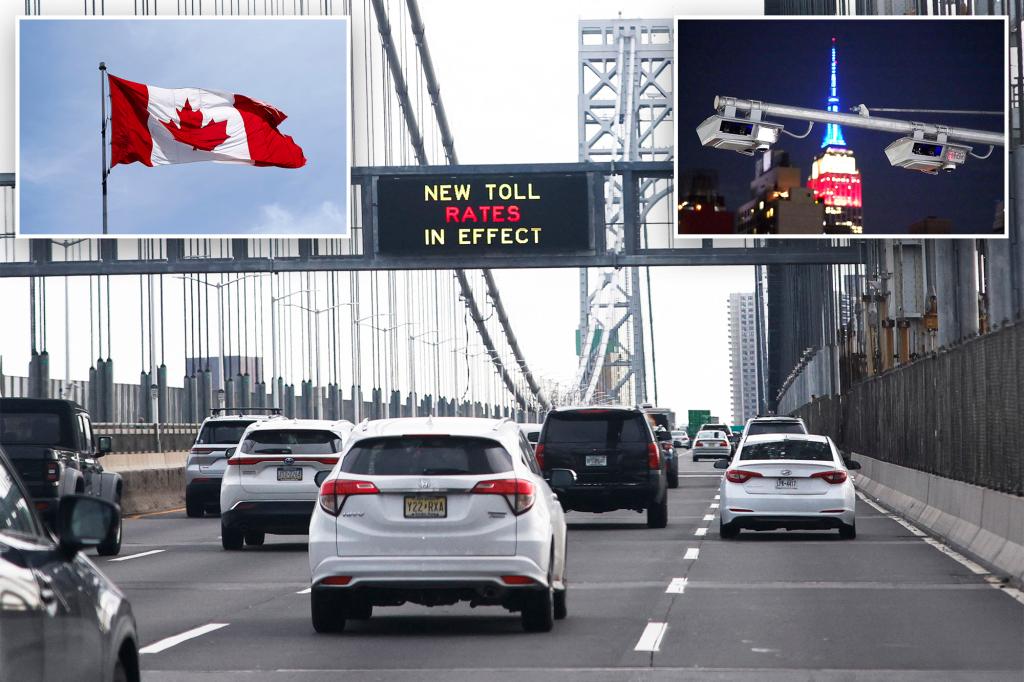Canadian drivers are contributing significantly to the mounting toll evasion problem plaguing the Port Authority of New York and New Jersey (PA). Internal documents reveal that approximately 400 Canadian motorists accrue between $100,000 and $140,000 in unpaid tolls, penalties, and fees each month, translating to an annual loss of $1.4 million for the agency. This represents a substantial drain on the PA’s resources, which are crucial for maintaining and improving the vital infrastructure connecting New York and New Jersey. While this figure only represents a small percentage of the overall toll evasion problem, it highlights the cross-border nature of the issue and the challenges in holding international drivers accountable.
The PA’s overall losses from toll evasion are staggering, reaching nearly $400 million annually and totaling $1.53 billion over a four-year period. This lost revenue has a direct impact on the agency’s ability to invest in infrastructure projects and maintain the critical transportation network serving the region. Local politicians, such as Staten Island Borough President Vito Fossella and Assemblyman Michael Tannousis, have expressed concern about the financial burden this places on law-abiding citizens and advocate for stricter measures to address the problem. Fossella stresses the impact on Staten Island residents who rely on the PA crossings and calls for greater accountability. Tannousis, echoing this sentiment, suggests that the Trump administration should intervene and hold Canadian toll evaders responsible, potentially linking the issue to ongoing trade discussions and tariffs.
The complexities of cross-border toll collection present significant challenges for the PA. A key issue is the difficulty in pursuing Canadian drivers who fail to pay their tolls. One proposed solution is to contract with a Canadian debt collection agency licensed to operate within Canada. This would allow the PA to leverage local legal channels to pursue outstanding debts. The majority of Canadian toll violators do not utilize E-ZPass, the electronic toll collection system, and are instead billed by mail based on their license plate images. Many of these mailed invoices are ignored, contributing to the mounting unpaid tolls.
The magnitude of the toll evasion problem extends beyond Canadian drivers. The PA reports that a significant portion of unpaid tolls originates from within the region, with New York and New Jersey drivers representing a combined 60% of violators. This suggests that while Canadian drivers contribute to the problem, addressing the issue requires a comprehensive approach targeting all toll evaders, regardless of their origin. The average debt per violator is approximately $330, indicating a widespread pattern of non-payment rather than a few individuals accumulating large debts.
The PA is actively working to combat toll evasion through increased enforcement efforts. These include increased summonses for violations, collaboration with law enforcement agencies, and the use of technology like license plate readers to identify and track violators. The agency has also highlighted enhanced penalties for toll evasion, aiming to deter future violations. Despite these efforts, the problem persists, highlighting the need for continued innovation and collaboration to effectively address the issue and recover lost revenue. The PA emphasizes that toll revenue is essential for funding vital infrastructure projects, underscoring the importance of holding all drivers accountable for their share.
The toll evasion issue plaguing the PA is not isolated. The Metropolitan Transportation Authority (MTA), which operates a separate network of bridges and tunnels, faces a similar challenge, with billions of dollars in unpaid tolls and fees accumulating over the past few years. This broader trend underscores the widespread nature of toll evasion and the need for collaborative solutions across transportation agencies. The combined losses from unpaid tolls across the PA and MTA represent a significant financial burden for the region and highlight the need for continued efforts to improve enforcement and collection practices.

